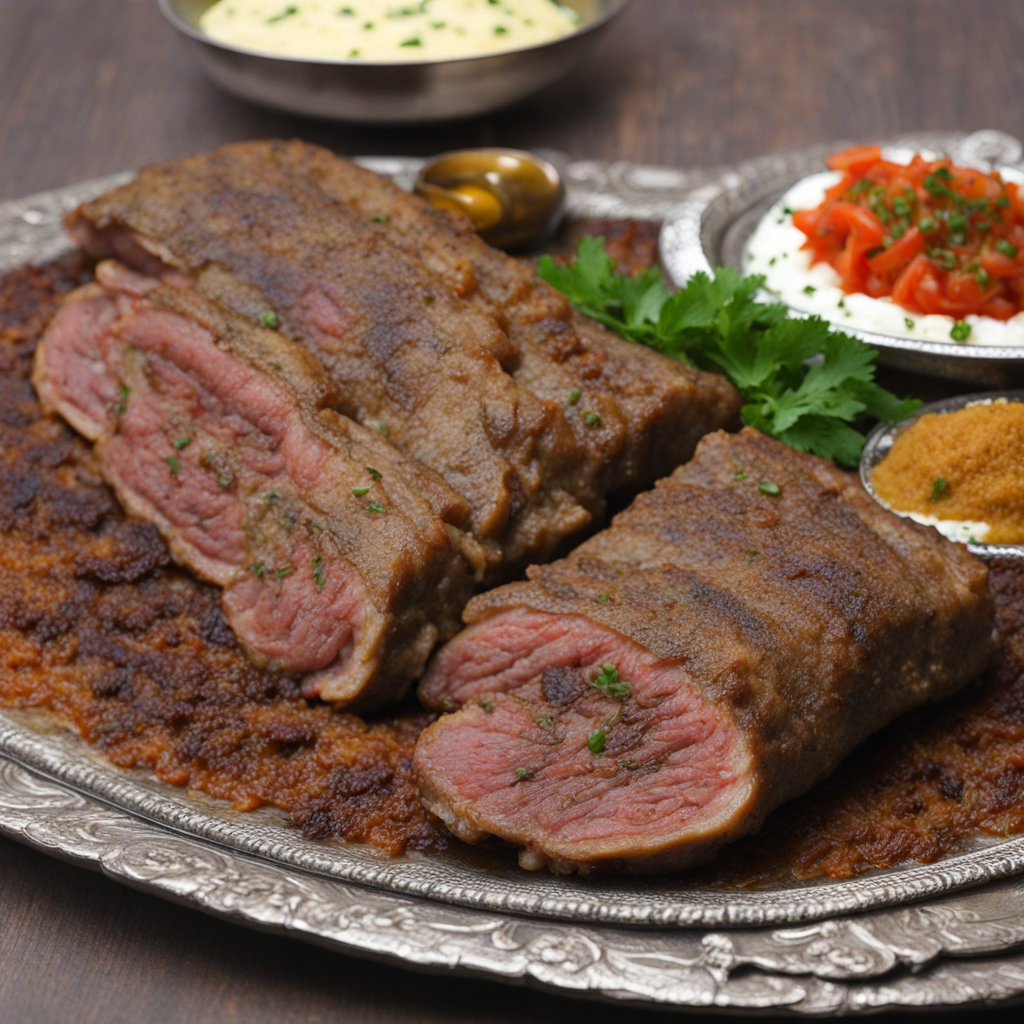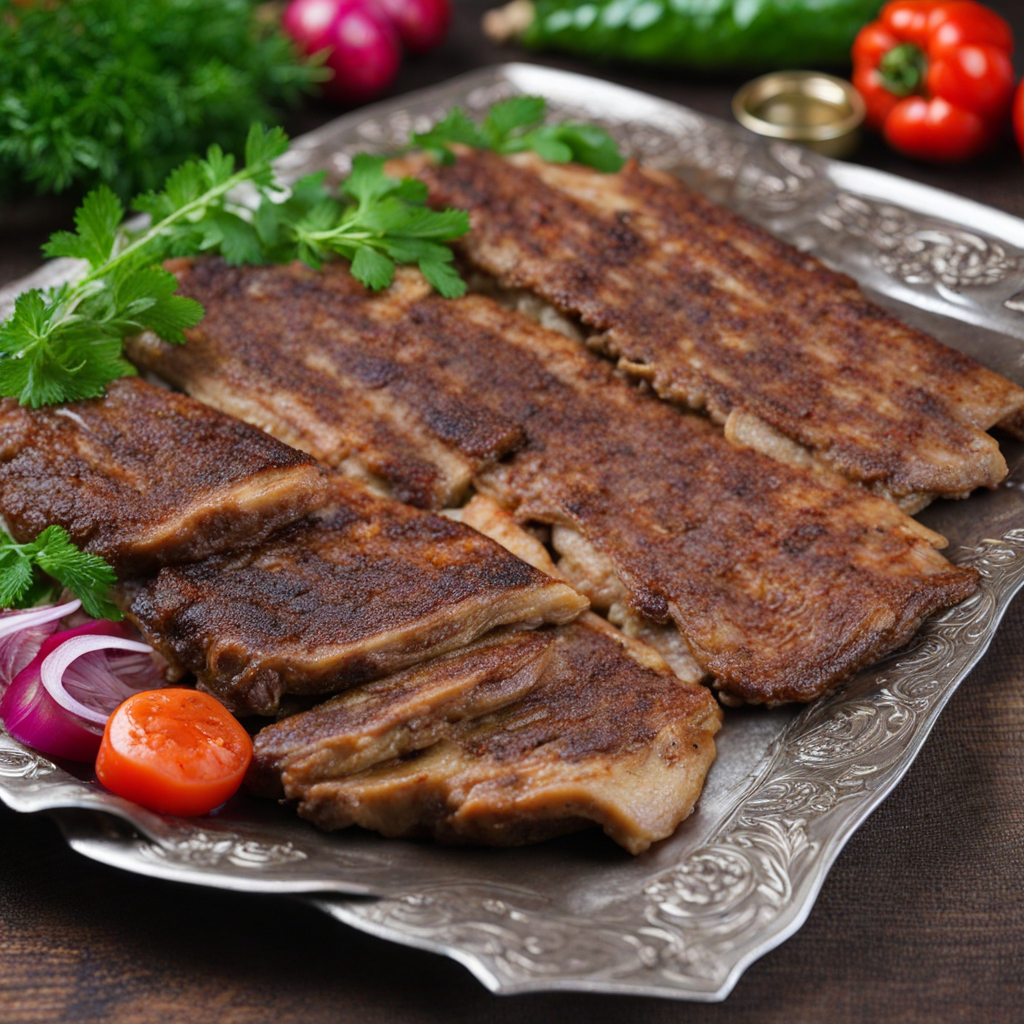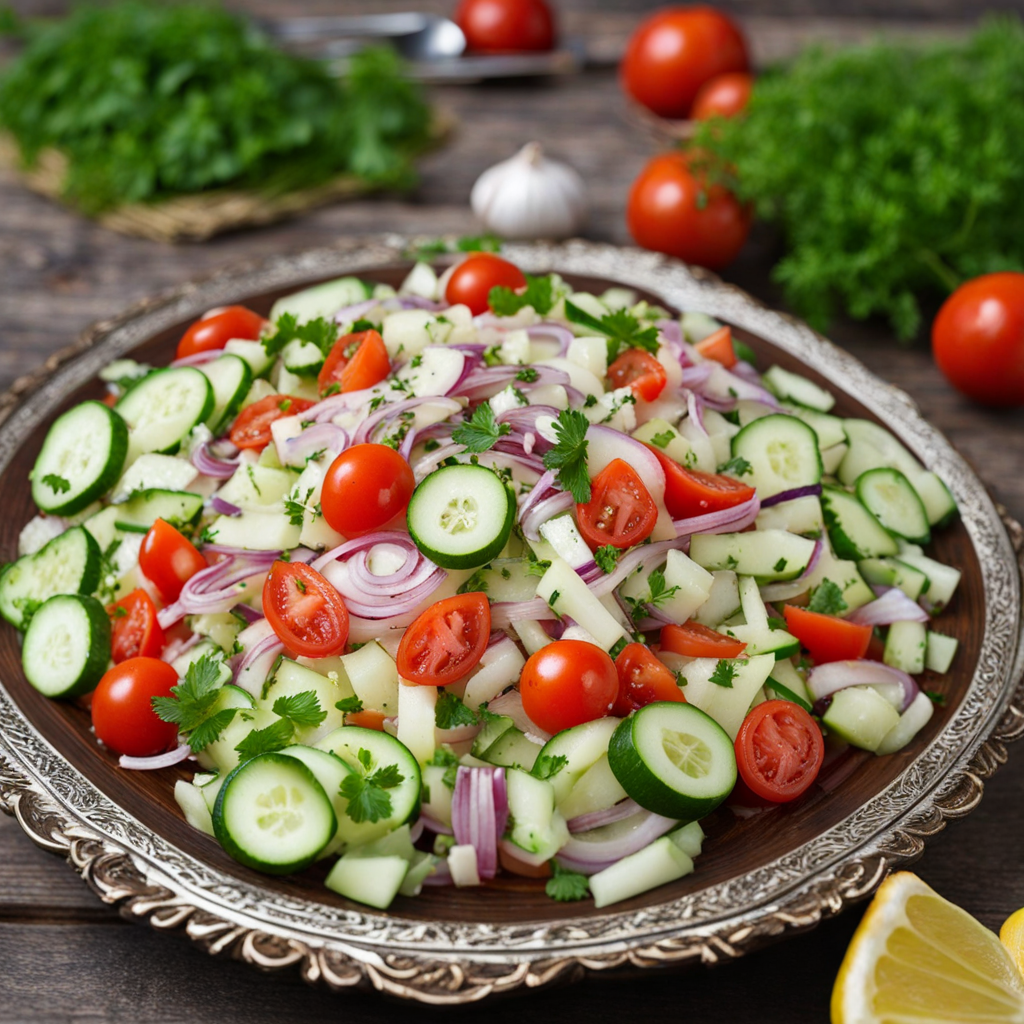Sajji
Saji, a beloved dish from Azerbaijan, embodies the rich culinary traditions of the region. It is often associated with communal gatherings and celebrations, reflecting the hospitality and warmth of Azerbaijani culture. The dish is traditionally prepared for special occasions and is particularly popular during festive events, showcasing the importance of food in bringing people together. The history of saji is deeply rooted in the nomadic lifestyle of the Azerbaijani people, who relied heavily on meat-based dishes. The name 'saji' itself is derived from the special cooking method that involves a metal tray or a large, shallow pan, which is placed over an open flame. This method of cooking not only enhances the flavor of the meat but also allows for the incorporation of various spices and ingredients that are typical of Azerbaijani cuisine. Over time, saji has evolved, with different regions adding their own unique twists, but the core concept remains the same. Flavor is a defining characteristic of saji. The dish is known for its smoky, savory notes, which result from the high-temperature cooking and the use of fresh herbs and spices. Commonly used spices include cumin, coriander, and black pepper, which complement the natural flavors of the meat. The dish often incorporates a variety of vegetables, such as bell peppers and onions, which add sweetness and depth to the overall profile. The combination of these elements creates a hearty and satisfying meal that excites the palate. Preparation of saji begins with selecting high-quality cuts of meat, typically lamb
How It Became This Dish
The Culinary Journey of Saji: A Traditional Dish from Azerbaijan #### Origins of Saji Saji, a traditional Azerbaijani dish, has its roots deeply embedded in the country's rich cultural tapestry and its historical interactions with neighboring regions. The name "saji" is derived from the method of cooking in a specially designed pan, also known as a "saj." This cooking method, which involves a large, round metal griddle, allows for a unique culinary experience, where meats, particularly lamb or chicken, are cooked over an open flame, creating a smoky and flavorful result. The origins of saj and, consequently, saji can be traced back to the nomadic tribes of Central Asia, where cooking over open fires was not only a practical necessity but also a communal activity that brought people together. As these tribes settled in the region that is now Azerbaijan, they began to adapt their cooking techniques, incorporating various spices and flavors that reflect the diverse influences of Persian, Turkish, and Russian cuisines. #### Cultural Significance Saji holds a special place in Azerbaijani culture, symbolizing hospitality and community. It is often prepared for gatherings, celebrations, and family feasts, serving as a centerpiece that fosters connection and sharing among guests. The act of cooking saji is as important as the dish itself; it is not merely about preparing food but also about engaging with friends and family, creating bonds over the shared experience of cooking and dining. The dish is typically accompanied by a variety of sides such as grilled vegetables, fresh herbs, and lavash, a traditional flatbread. This combination enhances the communal aspect of the meal, as diners often gather around the saj, sharing not only food but also stories and laughter. In Azerbaijan, the preparation of saji is often a ritualistic process, emphasizing the importance of tradition and the continuity of culinary heritage. #### Development Over Time As Azerbaijani society evolved, so too did the preparation and presentation of saji. In the early 20th century, the dish began to gain popularity beyond the local communities, thanks in part to the burgeoning tourism industry and the growing interest in Azerbaijan's rich culinary traditions. This period saw the opening of restaurants specializing in traditional Azerbaijani cuisine, where saji was prominently featured on the menu. With the advent of globalization and the exchange of culinary practices, saji has also adapted to incorporate modern cooking techniques and ingredients. While traditionalists may still prefer the classic preparation over an open flame, many contemporary chefs are experimenting with the dish, introducing innovative flavors and garnishes that appeal to a broader audience. For instance, some chefs may incorporate locally sourced vegetables or even fusion elements from other cuisines, creating a modern twist on this traditional dish. In addition to its evolution in preparation, saji has also gained recognition on the international stage. Azerbaijan has actively participated in culinary festivals and competitions, showcasing its rich gastronomic heritage. Saji has often been highlighted as a quintessential representation of Azerbaijani cuisine, drawing attention from food enthusiasts and chefs worldwide. This global recognition has not only elevated the status of saji but has also sparked a renewed interest in the culinary traditions of Azerbaijan. #### Regional Variations Like many traditional dishes, saji has regional variations that reflect local tastes and ingredients. In some areas, for instance, the dish may include different types of meat, such as beef or goat, while in others, seafood may take precedence, particularly in coastal regions. The choice of spices and marinades can also vary, with some regions favoring more robust flavors, while others opt for a lighter touch that allows the natural flavors of the meat to shine. In rural areas, where traditional cooking methods are still prevalent, saji is often prepared in a more rustic manner, emphasizing simplicity and authenticity. Here, families may gather around a wood fire, sharing stories and laughter as they wait for the meat to cook to perfection. In contrast, urban centers may see saji prepared in modern kitchens, showcasing a blend of tradition and contemporary culinary techniques. #### The Role of Saji in Modern Azerbaijani Cuisine In today's Azerbaijan, saji remains a beloved dish, often featured in family gatherings, weddings, and national celebrations. It serves as a reminder of the country's culinary heritage while also evolving to meet contemporary tastes. The dish stands as a testament to Azerbaijan's ability to adapt while preserving its unique identity. Moreover, saji has also become a symbol of national pride. As Azerbaijan seeks to promote its cultural heritage on the global stage, traditional dishes like saji play a crucial role in showcasing the country's rich history and diverse culinary landscape. The Azerbaijani government has actively supported initiatives aimed at promoting traditional cuisine, recognizing its potential to attract tourism and foster cultural exchange. #### Conclusion Saji is more than just a dish; it is a representation of Azerbaijan's rich history, cultural significance, and evolving culinary landscape. From its nomadic origins to its place in modern Azerbaijani society, saji embodies the spirit of community and hospitality that is central to Azerbaijani culture. As the world continues to explore the diverse flavors and traditions of global cuisines, saji stands out as a delicious testament to the enduring power of food to connect people and celebrate heritage. Whether enjoyed at a family gathering or presented in a modern restaurant, saji will undoubtedly continue to be cherished by generations to come, bridging the past with the present in a flavorful embrace.
You may like
Discover local flavors from Azerbaijan







